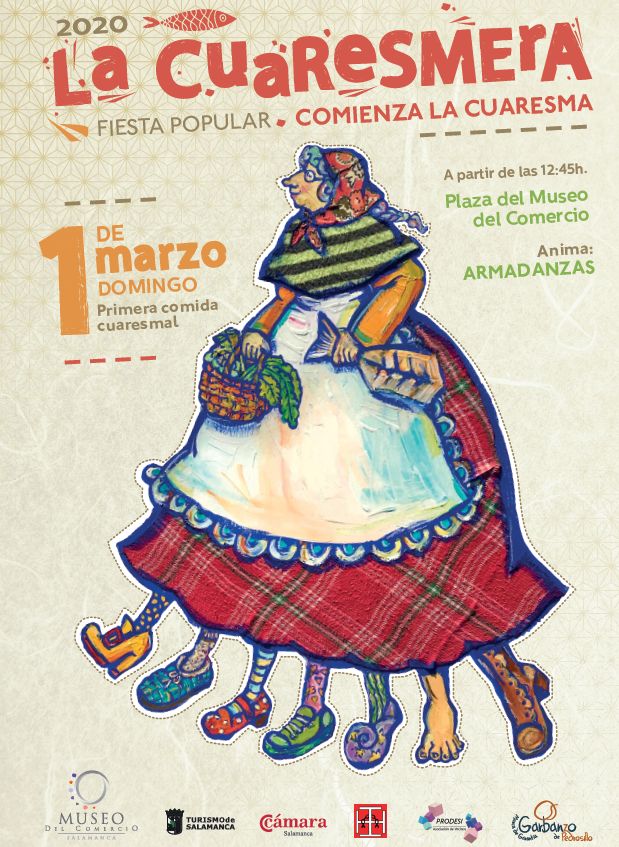The Lenten
Lent, a period of forty days of fasting and abstinence from meat, which precedes Easter and begins on Ash Wednesday, is already documented in 13th-century French literature and in Castile in the 14th century by the Archpriest of Hita in The Book of Good Love. In the seventeenth century the popular representation of Lent, is generalized in Central Europe, in the form of a Lenten calendar, which represents the seven weeks of Lent. In Spain this calendar is known as La Cuaresmera of which there are multiple representations. It is personified in the figure of an old woman, made of wood or cardboard, which shows the foods of the time of Lent, vegetables and fish. It has seven legs representing the seven Lenten weeks, symbol of the Lord's days of fasting in the wilderness. There were many representations of her Lent was usually hung in a window of the house, Ash Wednesday and every Sunday of Lent a leg was torn off. The Easter Sunday of Resurrection was sawn or burned with the last leg that remained and celebrated that day of jubilation with a succulent meal in which the meat in the form of lamb, sausages or hornazo again made its presence. Lent was also exhibited in the windows of shops and supermarkets to announce the sale of salted cod, protagonist in the Lenten vigil time, because it was the only one that arrived in Castile -preserved in salting- and that showed great variety in its preparation.


